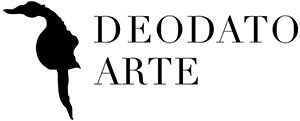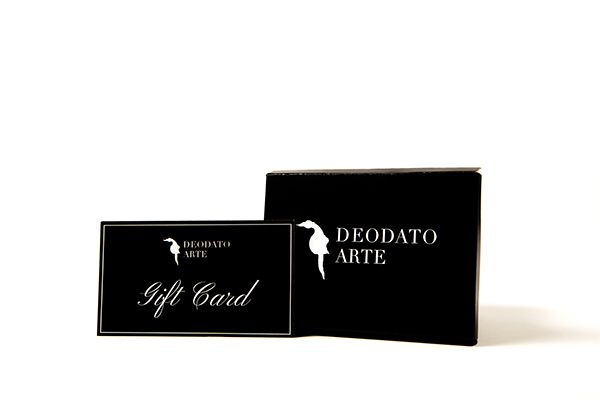- Home
- Artists
- Alex Katz
- Andy Warhol
- Angelo Accardi
- Arman
- Arnaud Nazare-Aga
- Banksy
- Bearbrick
- Bernard Aubertin
- Christo
- Damien Hirst
- Daniele Fortuna
- David Kracov
- David LaChapelle
- Dorit Levinstein
- Felipe Cardena
- Georges Braque
- Giosetta Fioroni
- Helmut Newton
- Henri Matisse
- iClim
- Invader
- James Rosenquist
- Jean-Michel Basquiat
- Jeff Koons
- Joan Miró
- José Molina
- Kaws
- Keith Haring
- Kenny Scharf
- Liu Bolin
- Lucio Fontana
- Marc Chagall
- Marco Glaviano
- Marco Lodola
- Mark Kostabi
- Maxime Siau
- Miaz Brothers
- Mimmo Rotella
- Mr. Brainwash
- Mr. Savethewall
- Obey
- Orticanoodles
- Pablo Picasso
- Richard Orlinski
- Robert Indiana
- Roy Lichtenstein
- Romero Britto
- Salvador Dalì
- Stik
- Takashi Murakami
- Tomoko Nagao
- Tvboy
- Yayoi Kusama
- ...other artists
- Athos Faccincani
- Carlo Massimo Franchi
- Davide Nido
- Franco Costalonga
- Francesco Musante
- Giampaolo Talani
- Giovanna Fra
- Giuliano Grittini
- Giuseppe Chiari
- Hiroyuki Takahashi
- Hitomi Maehashi
- Lido Bettarini
- Manolo Valdés
- Manuela Manes
- Matteo Guarnaccia
- Maurizio Galimberti
- Mimmo Paladino
- Salvatore Emblema
- Sam Francis
- Ugo Nespolo
- Xiaogang Zhang
- Gift Shop
- META VR
- BLOG
- ABOUT
- BUSINESS B2B
- Artists
- Alex Katz
- Andy Warhol
- Angelo Accardi
- Arman
- Arnaud Nazare-Aga
- Banksy
- Bearbrick
- Bernard Aubertin
- Christo
- Damien Hirst
- Daniele Fortuna
- David Kracov
- David LaChapelle
- Dorit Levinstein
- Felipe Cardena
- Georges Braque
- Giosetta Fioroni
- Helmut Newton
- Henri Matisse
- iClim
- Invader
- James Rosenquist
- Jean-Michel Basquiat
- Jeff Koons
- Joan Miró
- José Molina
- Kaws
- Keith Haring
- Kenny Scharf
- Liu Bolin
- Lucio Fontana
- Marc Chagall
- Marco Glaviano
- Marco Lodola
- Mark Kostabi
- Maxime Siau
- Miaz Brothers
- Mimmo Rotella
- Mr. Brainwash
- Mr. Savethewall
- Obey
- Orticanoodles
- Pablo Picasso
- Richard Orlinski
- Robert Indiana
- Roy Lichtenstein
- Romero Britto
- Salvador Dalì
- Stik
- Takashi Murakami
- Tomoko Nagao
- Tvboy
- Yayoi Kusama
- ...other artists
- Athos Faccincani
- Carlo Massimo Franchi
- Davide Nido
- Franco Costalonga
- Francesco Musante
- Giampaolo Talani
- Giovanna Fra
- Giuliano Grittini
- Giuseppe Chiari
- Hiroyuki Takahashi
- Hitomi Maehashi
- Lido Bettarini
- Manolo Valdés
- Manuela Manes
- Matteo Guarnaccia
- Maurizio Galimberti
- Mimmo Paladino
- Salvatore Emblema
- Sam Francis
- Ugo Nespolo
- Xiaogang Zhang
- Gift Shop
Register
Wishlist
Contact Us
- META VR
- BLOG
- ABOUT
- BUSINESS B2B


Thank you!

ORARI DI APERTURA
|MAPPA
- Home
- Artists
- James Rosenquist
- Highway Trust

Highway Trust
| Artist: Rosenquist James | Width: 120 cm |
| Support: Paper | Height: 58 cm |
VAT included
Products with VAT included show a price calculated with VAT tax, so the additional tax of 22% is already added to the price of these products.
VAT Margin
The products with VAT Margin apply the additional tax of 22% only on the margin, the difference between the price at which the product is purchased and the price at which the same product is resold.
THE ARTWORK
James Rosenquist - Highway Trust
The screenprint by James Rosenquist Highway Trust is part of a limited edition of 78. The work was created in 1978, it measures 58x120 cm and it is signed in original by the artist.
The works by James Rosenquist, Pop Art movement’s leading figure as Lichtenstein and Warhol, reflect his previous work experience as a billboard painter. In Highway Trust, James Rosenquist uses jumps in scale, large dimensions and an unusual association of images from mass advertising - the car and chocolate - to comment ironically on the persuasive power of advertising, through idealized and surreal images of everyday life.
James Rosenquist, Highway Trust: Prices and Value
If you are interested in the work by James Rosenquist Highway Trust and you wish to know the price click on "SHOW PRICE" to shortly receive it by email.
Do not hesitate to contact us for more information about the artist and his works for sale.
Join the wonders of art thanks to the wide selection of works available on our website.
ADDITIONAL INFORMATION
James Rosenquist - Highway Trust - 1978 - Hand-signed screenprint - Limited edition of 78 pieces - Frame on museum glass included
| SKU | ROSJ-220721-01 |
| Technique | Screenprint |
| Edition | Edition of 78 pieces |
| Support | Paper |
| Width | 120 cm |
| Height | 58 cm |
| Year | 1978 |
| Frame | Included |
ARTIST: JAMES ROSENQUIST
James Rosenquist: Pop Art movement’s pilaster
A need for a deep reflection fulfills the masterpieces by James Rosenquist. Pop Art, the movement with which his art is generally associated, can only roughly provide a definition for his works.
Alongside Roy Lichtenstein and Andy Warhol, the artist is considered one of the great fathers of Pop Art. James Rosenquist contributed to the movement by shaping its motifs according to his own aesthetic taste, in polychrome paintings that investigated the world of cinema, television and advertising.
Lichtenstein developed conceptual inclinations and Warhol engaged in satire. By contrast, the primary intention to inspire moved the brush of James Rosenquist - artist who did not see style and representation as the most important elements of his work, conceiving it instead as a starting point for a deeper reflection.
James Rosenquist: biography of the artist
For James Rosenquist, biography and passion for art were intertwined from the very beginning. Born in 1933 in Grand Folks, Dakota in the United States, he enrolled at the Minneapolis School of Art and then at the University of Minnesota. In his early twenties, after moving to New York, he took courses at the Art Student League and worked in advertising.
The artist’s experience in the world of advertising is reflected in James Rosenquist paintings, which are large-format works with simplified images and a specific sense of colour. Having successfully entered the world of Pop Art, James Rosenquist participated in the late 1960s in the researches of Op Art, a movement of abstract art that studied how to provoke optical illusions through measured juxtapositions of abstract subjects, as well as by exploiting the properties of colours.
Beginning in the 1970s, Pop Art and Op Art principles merged in James Rosenquist work, resulting in original compositions created by assembling finely compressed paint-montages. In 1995, the artist devoted himself to New Paper Constructions, a series of constructions on paper. In more recent years, James Rosenquist art favoured works closer to abstraction, similar to those of the painter Noland. The artist passed away in 2017.
James Rosenquist works between Pop Art and “visual poetry”
In the works by James Rosenquist, Pop Art and the artist's biographical events naturally intersect. Drawing on his experience as a graphic designer of advertising panels, the artist has collected images from advertisements, photographs and famous magazines and recombined them into attractive but fragmented compositions.
Through the use of the visual language of advertising - described by the American curator Walter Hopps as "visual poetry" - a social and political intent creeps into the artistic production by James Rosenquist. Pop Art works are thus charged with critical tones that question economic, scientific, ecological and existential issues.
James Rosenquist art technique: collage, printmaking, drawing and painting
The artist's technique is the result of his unquestionable talent and work spanning more than fifty years. In works by James Rosenquist, collage, painting, drawing and printmaking alternate as in a symphony, for a unique approach to image-making that helped define the Pop Art movement in the early 1960s.
James Rosenquist, Marilyn Monroe
Probably the most famous work by James Rosenquist, Marilyn Monroe was painted in 1962, after the superstar's suicide, in oil and spray enamel on canvas. It is currently in the collection of the MoMA in New York.
In Marilyn Monroe, James Rosenquist creates a stylized and fragmented portrait of the iconic lady. After breaking it up, he reassembles it by interweaving, inverting and superimposing disjointed parts of the figure of the woman, Marylin's name and a detail of the Coca Cola logo.
James Rosenquist, White Bread
The oil on canvas work by James Rosenquist White Bread dates from 1964 and measures 138x154 cm. The painting is one of the artist's most famous. The composition, however, is atypical. From the relatively modest scale to the cut-outs and juxtapositions that often characterize James Rosenquist work, collage and cut-outs are absent in White Bread. Instead, the subdivision of the surface is derived from the very shape of the painting's subjects. They are four slices of bread stacked one on top of the other, the first one sprinkled with a bright yellow cream, rhyming with the background.
In James Rosenquist art work the artist addresses the American culture of consumerism, but also painting itself, by testing the sensational visual results of applying colour to a support. The arrangement of the bread slices and the consonance between the background and the spreadable cream flattens the space, drawing attention to the irregular pattern formed by the succession of crusts.
James Rosenquist, F-111
Created between 1964 and 1965, James Rosenquist F-111 was conceived by the artist for his first solo exhibition at the Leo Castelli Gallery in New York. It consists of fifty-nine panels, whose dimensions were adapted to the exhibition space, with the intention of surrounding and embracing the viewer.
The painting best exemplifies the artist's contribution to the movement of Pop Art. James Rosenquist depicts an F-111 fighter-bomber stretching the length of the work, accompanied by various images - including a cake, a fork stuck in spaghetti, an atomic explosion - that are oversized and seemingly unrelated.
It is precisely the jumps in scale, the fragmentary nature of the work and the collage-like juxtaposition that distinguish the style of James Rosenquist. F-111, made in a turbulent century for the United States, responds to a social mission of the artist, who understood that he had to work to create new jobs and support the country's economy.
James Rosenquist, I love you with My Ford
The profound technological, artistic, social and political changes that affected America in the 1960s are recounted in this work by James Rosenquist. I Love You with My Ford, painted in 1961, is an oil on canvas measuring 210x238 cm.
In the work by James Rosenquist I love you with My Ford three images follow one another from top to bottom without blurring, as in three overlapping advertising panels. A Ford, the sensual profile of a woman's face, a plate of spaghetti with tomato sauce.
The absence of an obvious link between the three subjects mutually amplifies their meaning. The fragmented composition, reminiscent of the emblematic drive-in cinemas, could be seen as a criticism of consumerist American society by James Rosenquist. I Love You with My Ford is currently in the collection of the MoMAin New York.
James Rosenquist art for sale with prices and value on Deodato Arte
If you are interested in James Rosenquist, paintings by the artist are available for sale online on Deodato Arte website.
James Rosenquist art for sale is available with prices and value on our website. James Rosenquist works proposed by Deodato Arte Contemporary Art Gallery are carefully selected and provided with authentication certificate.
For any information about James Rosenquist art please do not hesitate to contact us at our e-mail address [email protected].
SHIPMENT DETAILS
The artwork is delicate and requires a custom-made wooden box to protect it during transportation. Delivery to EU countries takes 5-15 business days.
For deliveries outside the EU there may be a clearance delay at customs. Contact [email protected] to receive an estimate of possible customs delays.
The shipping cost is calculated before payment. The cost of the box and packaging is included in the shipping cost.
For more information, please visit our Shipping Methods, Returns and Refunds.
HD IMAGE
By registering you can download a template of the certificate of authenticity and/or HD image. Register and make the page reload.
REGISTER OR LOGINHOW TO BUY
We are happy that you decided to buy an artwork. We'll explain how to do it, but always remember that you can also buy via email ([email protected]), by phone (+39 02.80886294) or by physically coming to one of our galleries.
PRICE
If the price is visible in the product fiche you can click "ADD TO CART" and proceed autonomously choosing later how to pay and how you like shipping (or pick-up it in one of our store).
If the price is not visible, you must press the "SHOW PRICE" button, so you will receive an email with the price and a button, "DON'T LOOSE IT, BUY NOW": if the price is right for you click on this button and you will be sent back to the site to complete the purchase.
TAX
if you LIVE IN EU
If you live in Europe (CEE) the price we show you already includes taxes. The works are taxed either with VAT exposed (22%) or VAT with the margin, if you are a private person you do not change anything, if you are a company: in In the first case, you will recover the VAT, in the second, no. When you put the works in the cart you will be separated from the vat exposed.
If you DON'T LIVE IN EU and you want an EXTRA EU shipping
Many works (not all) have an exposed VAT of 22% included in the price, this vat will be spun off! Obviously you will pay the VAT to your destination country, if due. For example if you live in Switzerland you save 22% but you will have to pay 8.1% to your customs, if you live in Hong Kong you will save 22% and you will not have to pay anything to your customs (lucky you).
SHIPPING
Shipments are insured, check the product fiche for more information, or write to [email protected]. For works in stock the delivery time for Italy is three working days, before placing your order please contact us via email ([email protected]) or by phone (+39 02.80886294) to check availability.
PAYMENT
If you complete the purchase on the site you can use a credit card, or you can make a bank transfer. Payment in cash is accepted up to 5,000 euros physically in one of our stores. Payments in BitCoin or cryptocurrencies are NOT accepted.
- Mr. Savethewall My heart - Poster£12.75 VAT included
VAT included
Products with VAT included show a price calculated with VAT tax, so the additional tax of 22% is already added to the price of these products.
VAT Margin
The products with VAT Margin apply the additional tax of 22% only on the margin, the difference between the price at which the product is purchased and the price at which the same product is resold.










 Register
Register Wishlist
Wishlist Contact Us
Contact Us
